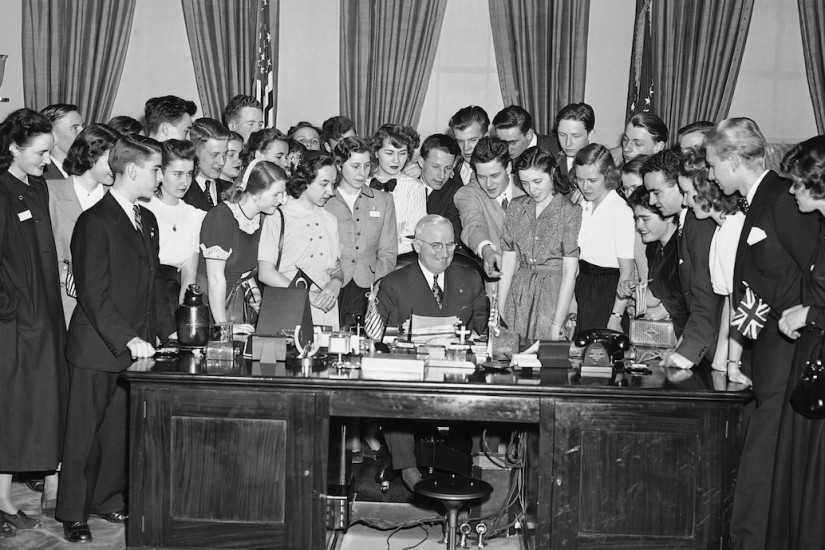Not since the early years of the Iraq War has foreign policy dominated American headlines as it does in the age of Trump. The United States in the ’90s enjoyed the narcissism of the “New World Order,” and journalistic glances abroad mainly flattered this self-conception. After Bush, Obama campaigned as an antiwar candidate, only to get the country embroiled in at least five additional conflicts, all more or less waged sotto voce, so as to minimize the tarnish imperial police actions could inflict on his Nobel. Trump is less trusted and manifestly less given to doing things quietly than Obama. With every gesture he makes to the outside world, whether through actual diplomatic summits, rhetorical saber-rattling, or simple racist bluster (“shithole countries”), the news is filled with a stream of developments centering on actors elsewhere in the world: trade war with China; withdrawal from the Iran Nuclear deal; the Syrian civil war; imprecations of “fire and fury” for North Korea; moving the American Embassy to Jerusalem and the IDF’s carnage in Gaza. Trump’s son-in-law’s romance with Saudi Prince Mohammad bin Salman, meanwhile, has masked the most lethal policy currently being enacted on the face of the earth, the Saudi-led war against the Houthis in Yemen, which has been actively aided by the United States; the unmasking of this policy following the murder of Jamal Khashoggi has only moved foreign policy further into the foreground. Behind all of this chatter, November 8, 2016, remains on endless loop in part because Russian meddling has been deemed a Pearl Harbor–grade event.
But while the national security establishment has mobilized these conflicts in hopes of salvaging their preferred militarist approach to globalism, a left increasingly vocal about domestic policy—Medicare for All, jobs guarantee, Green New Deal—has only recently begun to search for its voice on foreign policy. After decades of quiescence, that voice is unpracticed. When Bernie Sanders, the most successful socialist politician in American history, gave a major address in 2017 laying out his international vision, it was full of refreshing candor and sound ideas. A foreign policy whose objective was “dominance,” he declared, had led to coups and military invasions, from Guatemala in 1953 to Iraq in 2003. Instead, Sanders called for a policy of “partnerships”—with governments and peoples—in service of democracy, human rights, social welfare, and environmental sustainability.
Just as he sought to make “democratic socialism” part of the mainstream by connecting it to Franklin Roosevelt’s “Economic Bill of Rights,” Sanders alighted on the Truman Administration’s European Recovery Program, more commonly known as the Marshall Plan, as a precedent for his foreign policy vision. Rather than “punish and humiliate the losers . . . we helped rebuild their economies. . . . We also provided them support to reconstruct democratic societies.” For Sanders, and for most liberals and progressives, the Marshall Plan is a foreign policy object with almost talismanic properties. It proves that the United States in the international arena is capable of substituting generosity for retribution, cooperation for enmity, and economics for military force, all in the pursuit of an enlightened self-interest.
The trouble is that this view is a myth. It licenses the belief that there was a good cold war and a bad cold war, that liberalism was forced to become militaristic against its will, and that an exercise in geopolitics was about something other than geopolitics—that is, a “liberal international order.” To deconstruct this myth requires understanding what exactly the Marshall Plan was intended to do, where it led, and what it meant for democratic aspirations at home and abroad. At the heart of this ideological complex may lie the reason why the left has so far failed to articulate a foreign policy for our age.
